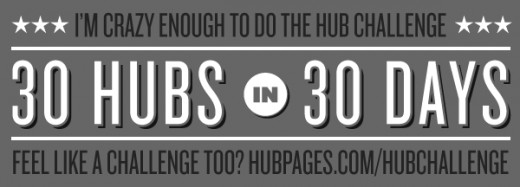The Phantom That Was Olentangy Park
Railroad and Streetcar Connections to Parks of Yesteryear
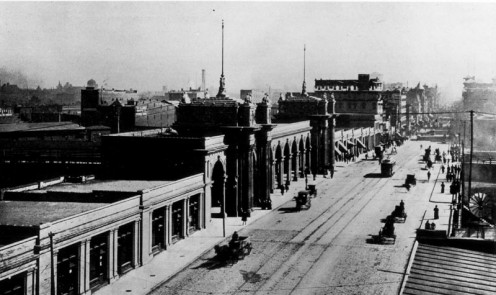
Union Station 1897 - 1976
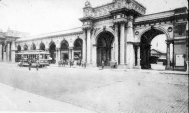

Streetcars
Where Was It? Almost at Disneyland!
Union Station was an important part of Olentangy Park in that the railroad and streetcar line purchased land for the park at the turn of the 20th century and provided the primary transportation to and from it. The park operated to 1938 and the station until 1976.
In the 1970s, there were rumors and speculation about the Disney Company proposing to purchase all the land in Franklin County Ohio from xxx North High Street, 10 miles to the west to the Olentangy River and 20 miles North to the cities of Delaware and Powell. This was at least 200 square miles of commercial and residential properties. According to the local media, Disney planned to build another Disney World in Columbus. However, this was never accomplished.
The lands in question included the first site of the Columbus Zoo and Aquarium just to the south and beside of Graceland Shopping Center. That small area also once contained a vacation spot with fishermen's cottages where people stayed to fish at a nearby stream. The cottages are small and still there, in a tiny but attractive residential area of a few blocks.
This area along Rathbone Road has been a topic of uproar for over 20 years, because the City would like to pave a highway from Morse Road on the other side of High Street, across High, down Rathbone, across the water; then connect it to Bethel Road to eliminate traffic jams. The residents won't sell now and they would not sell in the 1970s.
No Disney Columbus and No Morse Road Connector.
At the south end of the land that Disney wished to buy was the former site of Olentangy Park.
Vintage Postcards

Boat Dock
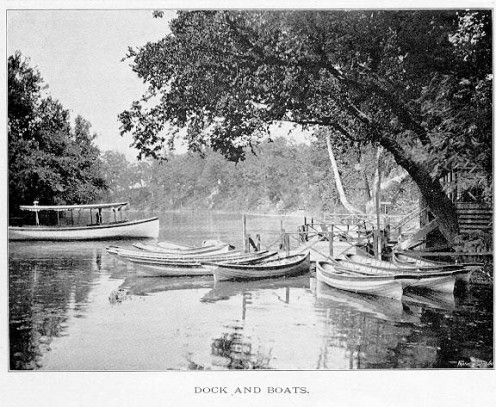
Ray Bradbury and Streetcar Parks
If you read some of Ray Bradbury's stories, you'll find tales about defunct parks at the ends of Streetcar or Trolley Car lines.
One favorite is about a driver that took his streetcar-load of kids beyond the current tracks, down the old tracks to a former park, where they could have one last picnic before the streetcar and its system were retired permanently (that'e "progress"). It's a lovely story full of his memories from childhood. These parks would decay around an old carousel, picnic tables, band gazebos, and abandoned concession stands unti the cities demolished them and built something else.
The transportation companies would build these parks in order to increase ridership by providing a venue to attend at the end of the line. Weekends were popular in the spring, summer, and early fall around these parks and the streetcars stayed busy. This is how Olentangy Park started, as a street car park.
I learned the following from friends in Cincinnati several years ago and from grandparents of friends:
A private owner, Robert Turner, first built The Villa amusement park back in 1893. After three yers, the City of Columbus saw an opportunity and the Columbus Street and Railroad Company bought the property in 1893 and devloped it into Olentangy Park. As street car parks go, it was one of the best, with the most amusements and the most lush landscaping.
People from Southern Ohio would ride a train from Cincinnati up to Union Station in Columbus, then hop a street car right at the entrance of the station to ride up High Street directly to Olentangy Park, about 5 miles. A train ran right into the park at one time as well, through a special arch like those of Union Station. The park was just off High Street, with a large manmade lake and a carousel and other rides among trees, flowers, and other plants.
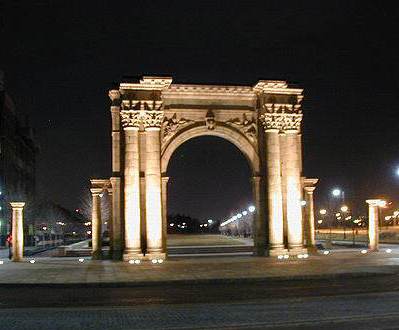
20th Century Park
The decided to sell Olentangy Park in 1899 and did so to the Dussenbury Brothers, who added a theater and a ballroom much like that at Buckeye Lake to the east, and more rides. New rides includes a Loop-the-Loop like a small roller coaster, the Whirlwind coaster, and the Shoot-the-Chutes that had been invented by Captain Boynton (Boyton) at Sea Lion park (Luna Park) at Coney Island in NYC.
Olentangy Park operated for 44 years, from 1893 to 1938, around the beginning of World War II. Property values were increasing and the Dussenbury Brothers made a profit when they sold to the LeVeque Family, after whom a prominent downtown skyscraper was named and stands today. A race up and down the stairways of the LeVeque Tower is held annually to benefit charities in Columbus. The LeVeques built apartments on the site that stood until the 2000s. A huge bowling alley, Olentangy Lanes, fronted High Street and just to the south was one of the first Big Bear grocery stores (now defunct) in town. Physicians' offices and a restaurant also fronted High Street, on the other side of the bowling alley.
Olentangy Park in it heyday was not tiny, as one might think from looking at the Olentangy Condominiums standing on the site today. They simply block the view of the land behind them. After full development, the park included four (4) roller coasters, two (2) Ferris wheels, two (2) carousels, a swimming pool, a boat ride and boat house, a race track, a train ride, a sawmill attraction (the old Piatt's Mill and a dam), a Grand Ballroom, Loop-the-Loop, Shoot-the-Chutes, and even more rides.
The park may have introduced a swimming pool because police cracked down on swimming behind the Piatt Mill on the Olentangy River at the west border of the park. People were swimming in the nude and this was close to Downtown Columbus and heavy traffic, including boats.
Olentangy Park was not your ordinary street car park, but began in that guise.
